“Pride is all very well, but a sausage is a sausage.
”
In the context of the human time line, the era of refrigeration is but a blip. Widespread availability of electric refrigerators is younger than 100 years. Imagine having to cut ice blocks off the pond in February and storing them in insulating straw in the root cellar in order to be able to keep things from spoiling (or make ice cream) in the summer. I have a friend who still remembers ice being delivered by horse-drawn wagon in Manhattan, in the 1940’s. Before we had a virtually foolproof appliance to help retard the spoilage of our food, we had a set of technologies that relied on an experiential understanding of microbiology. These practices evolved through happy accidents and/or divine inspiration at a time when humanity didn’t even realize that there we’re such things as microbes.
Summer sausage is one of these technologies. In the lineage of sausages, the original summer sausage is related to hard salami. The primary difference is that it is smoked, where as a salami is not. These sausages are preserved through salinization and fermentation. Just like with sauerkraut, pro-biotic bacteria colonize the food source, lowering the pH. The greatest danger in the preservation of low acid foods (meat, vegetables) is accidentally creating an optimal environment for the devil’s own microbe: Clostridium botulinum! This little beasty is everywhere, all the time. It’s probably either on you, or within ten feet of you, right now. Fortunately, unless the conditions are just so, it remains inactive in a cist stage. You could eat a spoonful of it with no ill effects. The problem arises when it comes out of hibernation. In order to enter its active phase, this bacterium must have a pH level above 4.6, darkness, and a lack of oxygen. It’s metabolic process produces the botulinum toxin. This is a nerve agent. It causes a lovely progression of symptoms from vision impairment and slurred speech right through to respiratory failure and death. Its name comes from the Latin “botulus”, meaning sausage.
So how is it that a sausage can be made in the fall, enjoyed in the summer, and not kill us? Fermentation, that’s how. Like other fermentation processes (yogurt, sourdough, etc.) a culture is needed. In our modern age, cultures can be ordered on-line and delivered to your door. Back in the past, cultures were either mothered into the new batch (add yogurt to warm milk, make more yogurt), or present in the equipment used in the process. If you put cow temperature milk in an oak barrel that is never sterilized and has a thriving colony of mesophilic bacterial living in it, you will ripen (acidify) the milk to the perfect pH to make cheese. Likewise, if you butcher your hogs on a wooden butcher block that is never sterilized, only cleaned with vinegar and salt (salinization and acidification) a pro-biotic population of bacteria will set up house keeping and inoculate your meat as you prepare it. Create ritualistic practices that favor pro-biotics and discourage pathogens and a culture (double entendre fully entendred) can thrive for centuries.
The most radical summer sausage would be made using this fermentation process, and that is why we shall call this one summer sausage no1. We are not doing that, this time. Just as with the need to grow some old school wheat to make totally radical bread, I need to build a good butcher block and rub a nice northern Italian sausage around on it (or something like that) before I can pull off the most radical sausage. This time around, we are going to rely on our old friend, sodium nitrite, to keep C. botulinum at bay.
If the bio-science isn’t deep enough for you yet, you’re in luck! Now we need to examine the chemical “sodium nitrite”. NaNO2 inhibits the growth of C. botulinum by preventing iron-sulfur clusters needed for energy metabolism. In other words, even if all other requisite conditions are in place, C. botulinum cannot produce its toxin is it cannot complete its metabolic cycle. On the sensual level, sodium nitrite provides the retention of color in cured meat. The reason ham is pink, and bacon is red and white is because of sodium nitrite. You can make either without it, but after cooking your meat will be brown. It also improves texture by breaking down the connective tissues that cause toughness. Too bad it’s poison.
But, so is water, if you take too much, or use it in the wrong way. Sodium nitrite is sold under many names (Prague powder #1, Instacure #1, pink salt, etc.) These products are NaNO2 mixed with NaCl (table salt) in low concentrations to minimize the risk of over use. Specifically, Instacure #1 is 6.25% sodium nitrite. In this recipe, there are 5 teaspoons of Instacure #1 for 25 lbs of meat. The actual sodium nitrite amount is 0.625 grams. So, like two tick-tacs in half a bus tub of meat. The fatal dose is 4.6 g for a 150 pound person. That would be 184 pounds of sausage in a single sitting, just for reference.
There is currently concern about the ill effects of “nitrates” in the diet. First of all, when “nitrates” are mentioned, what is meant is sodium nitrite. Sodium nitrate (NaNO3) is also used in curing (Instacure #2) in conjunction with NaNO2, for longer cures like dry salami and prosciutto ham. Over time, the sodium nitrate breaks down into sodium nitrite acting like a time-release medication. The issue of concern is with regard to links between sodium nitrite and colon cancer, Alzheimer’s, and other health issues. A reaction can occur in digestion that produces “nitrosamines” that are linked to increased cancer risk. Fortunately, Vitamin C prevents the formation of this compound. FDA regulation requires the addition of ascorbic acid (vitamin C) to products containing sodium nitrite, for this very reason. By adding vitamin C powder (or a fist full of sour patch kids) to your cures, you can solve this problem. The acidity also has beneficial action on the cure, and imparts a flavor not too distant from that produce in the historic pro-biotic fermentation. Alternately, you can just add some vitamin C rich fruit to the plate while eating this summer sausage, if you are concerned.
And while I’m at it… that “uncured” bacon you are paying double for contains the same sodium nitrite level as the “cured” stuff. It is cured with celery juice, or kale powder, or some other sodium nitrite rich vegetable source. That’s all marketing! If it’s pink when you cook it, its got sodium nitrite in it, period. In summation, a diet too loaded with cured meat may not be the best idea, but as with all things…moderation. It’s just too darn good, though!
Okay! Enough “blah, blah, science, blah, blah”. Lets make some sausage!
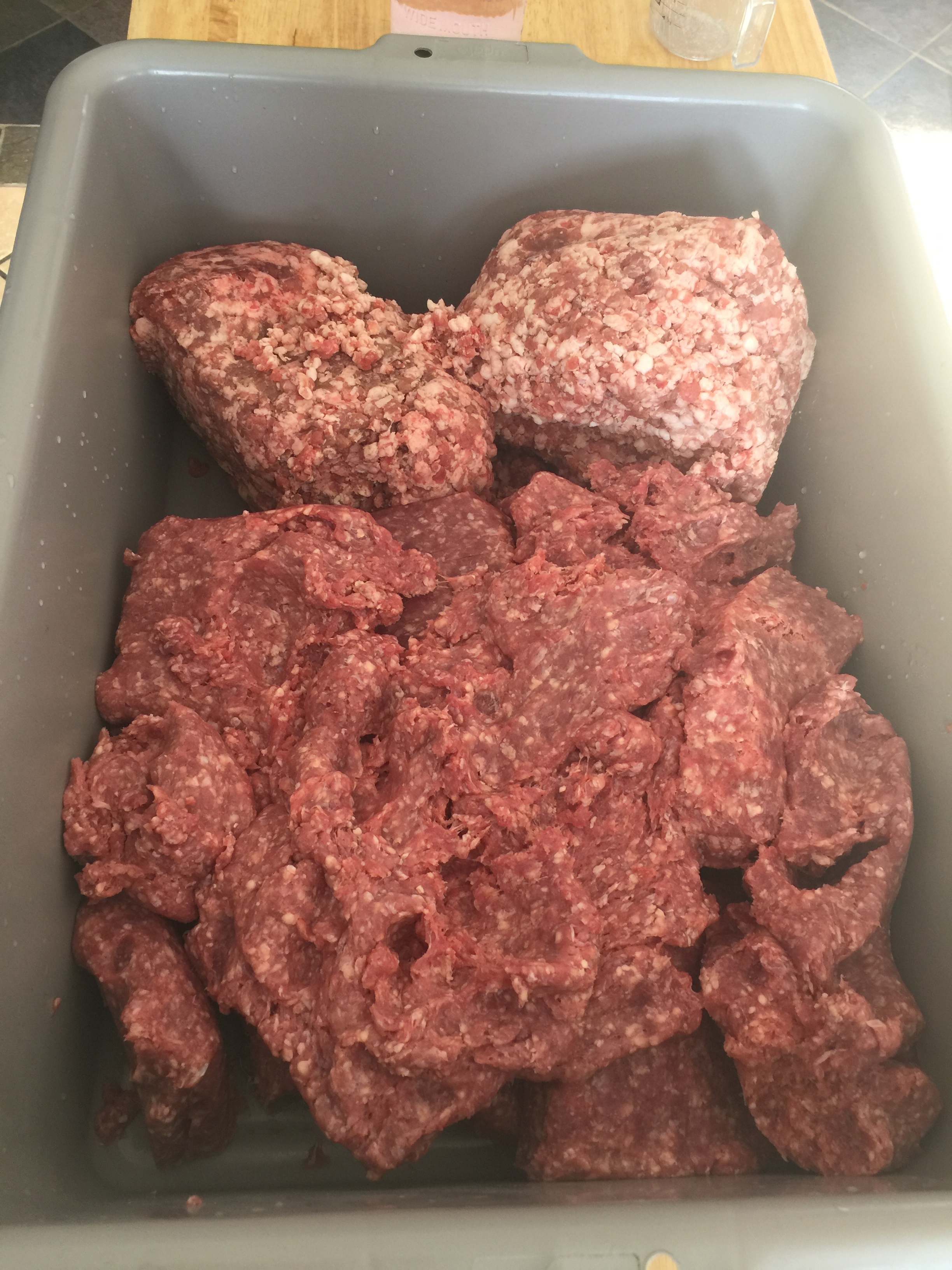
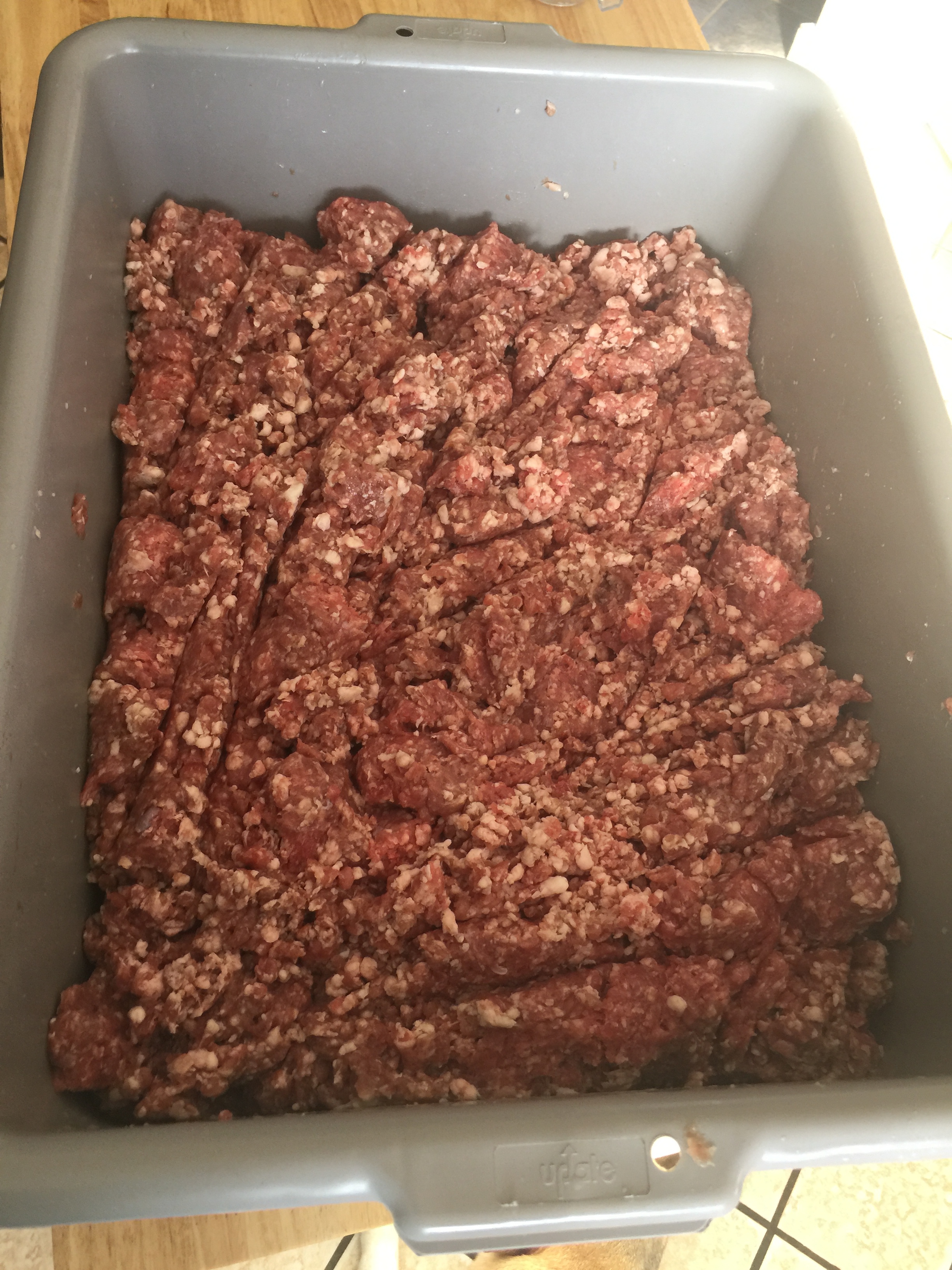

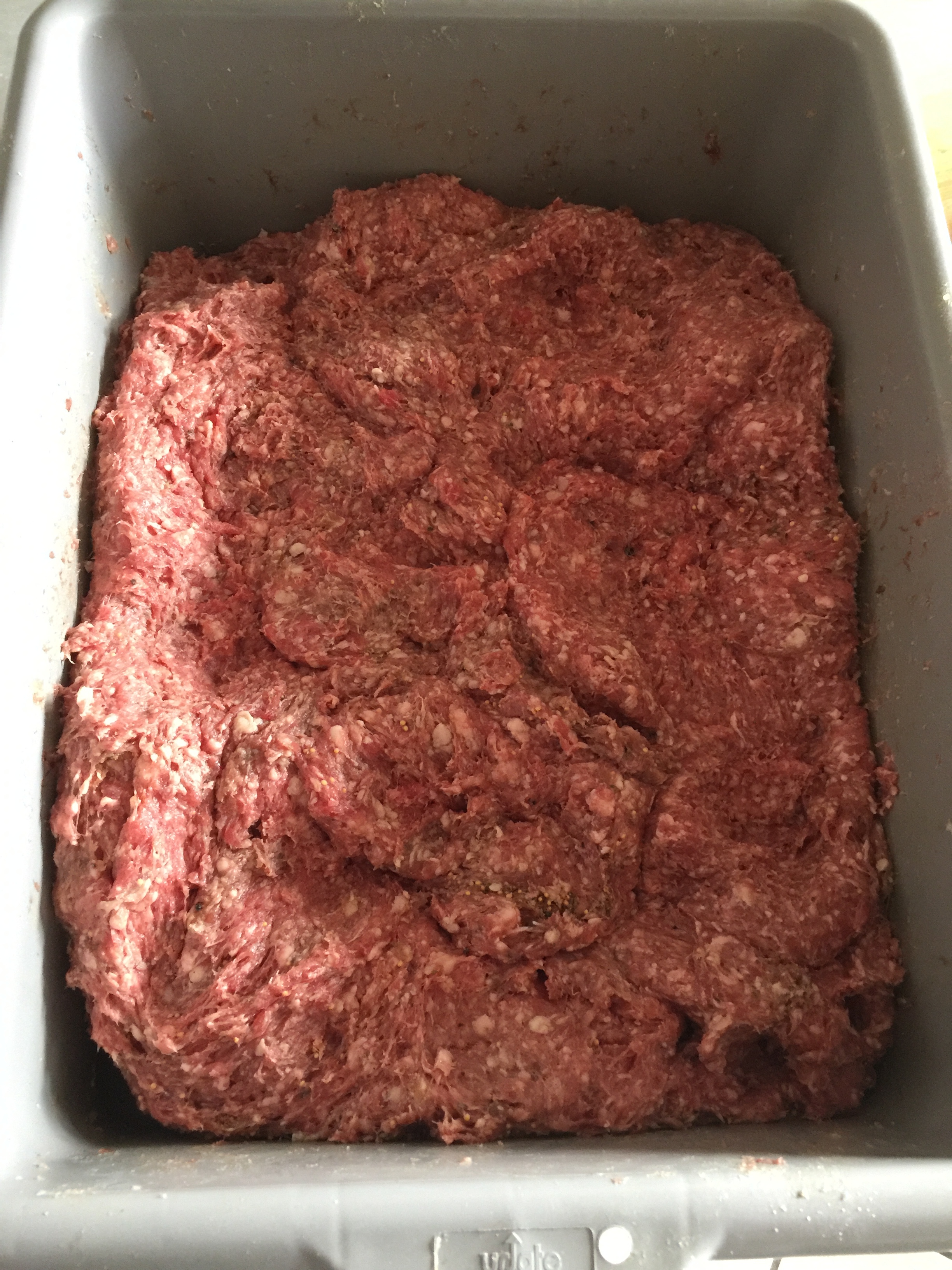
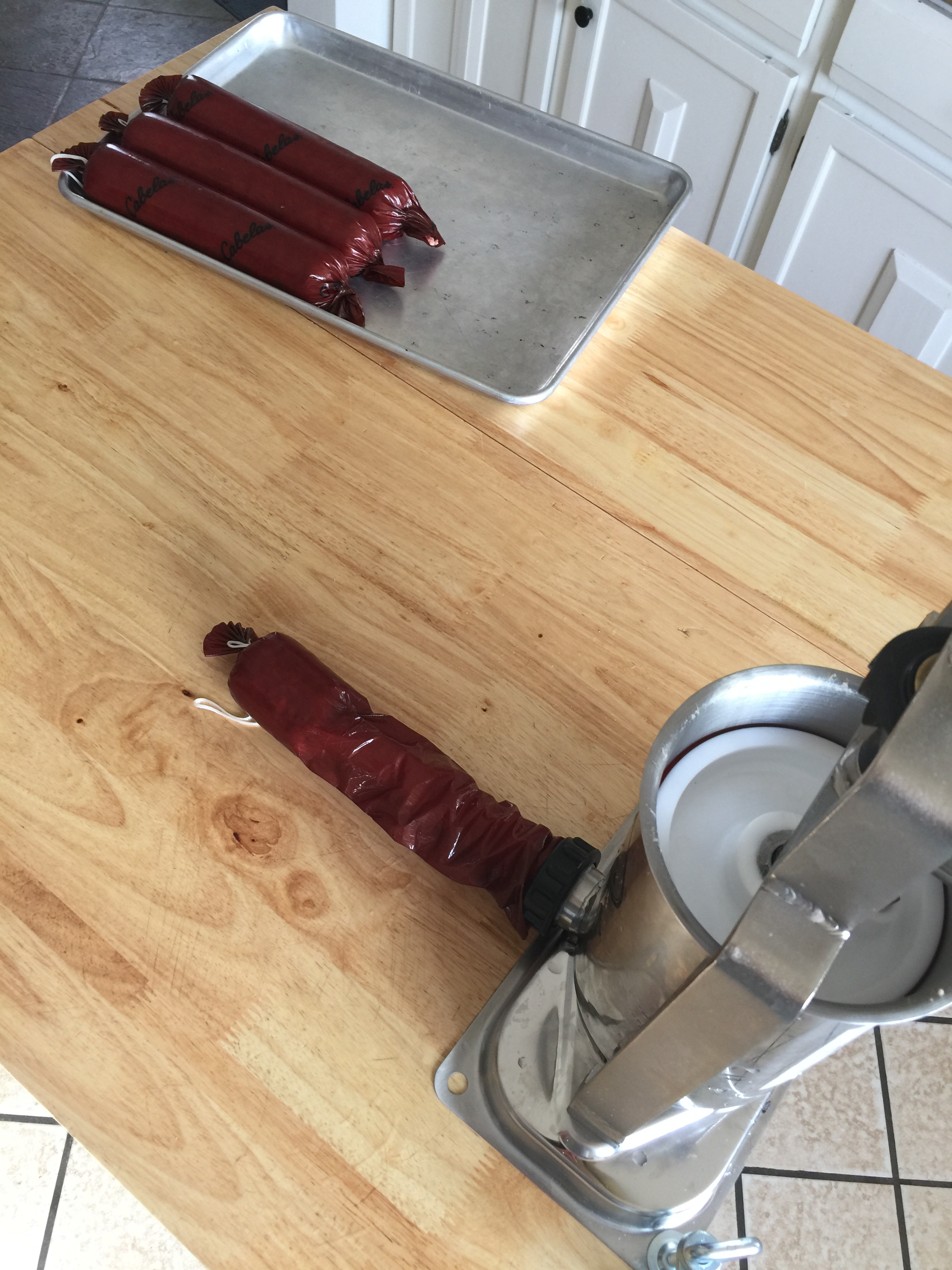
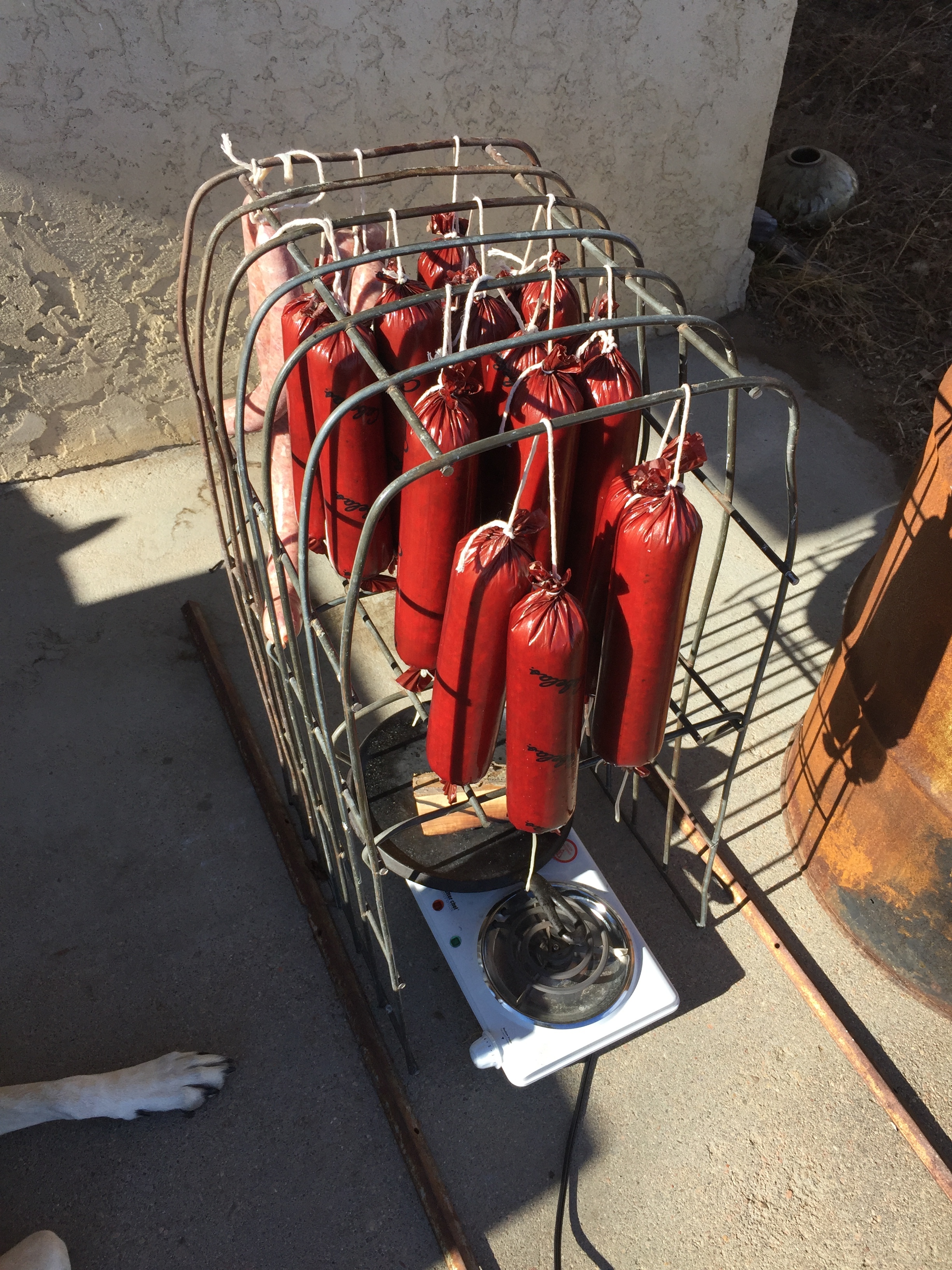
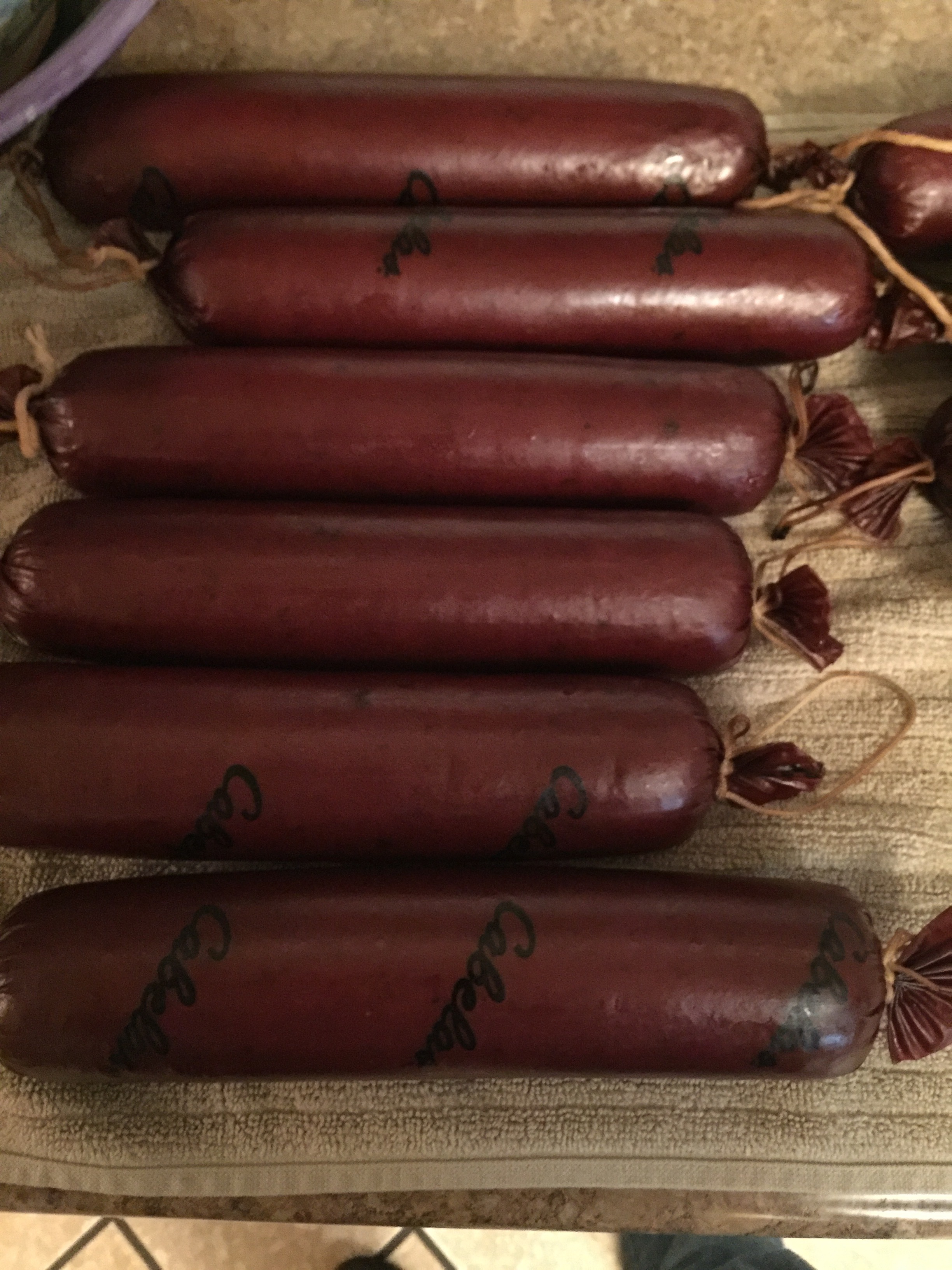
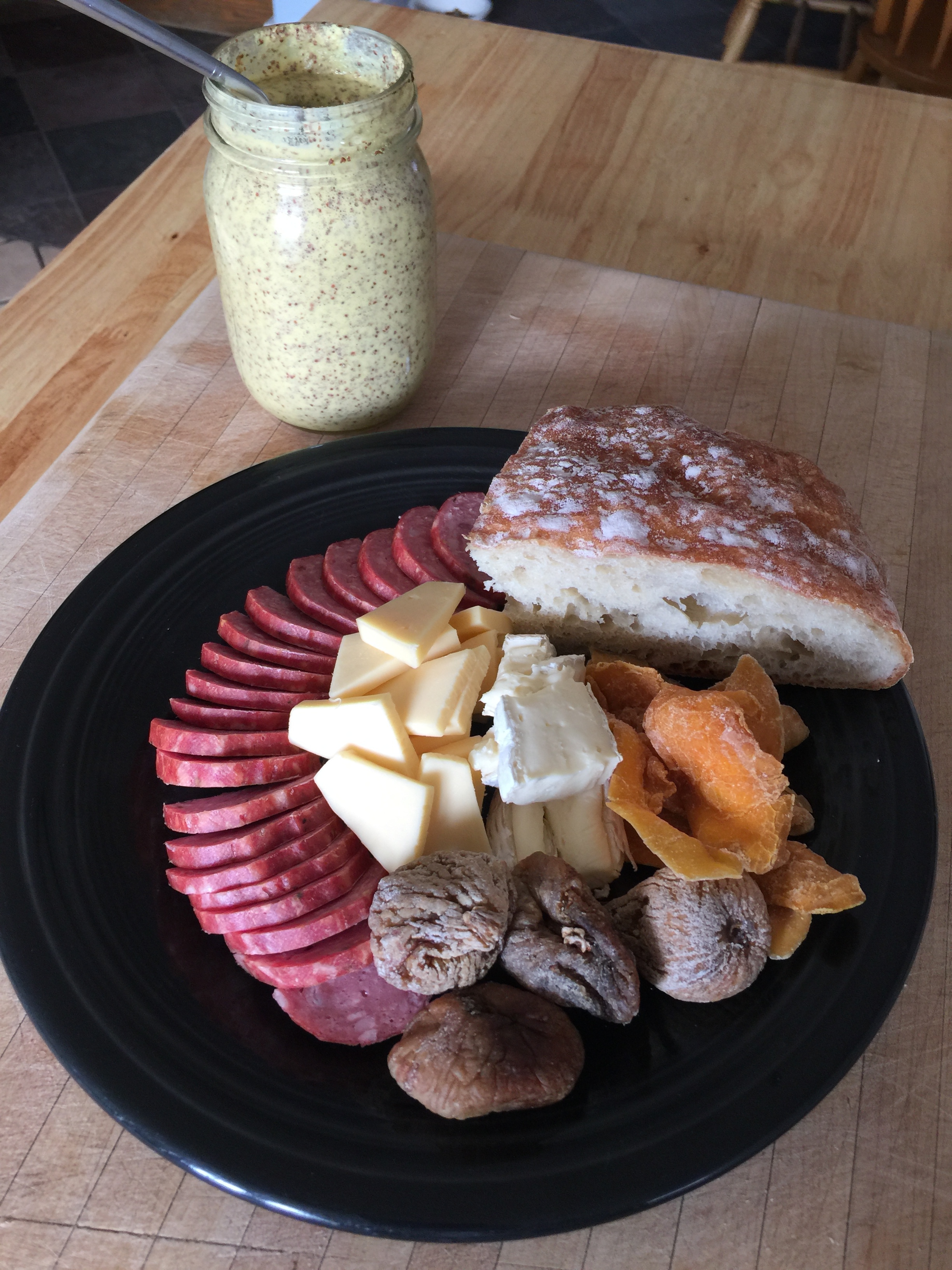
Grind:
10 pounds semi-frozen pork (50/50 fat to lean. Shoulder is good, but back fat and leg works, too.))
15 pounds semi-frozen beef (I used a 1 year old steer, so technically “grass-fed veal”)
Dissolve:
2/3 cup salt
5 teaspoons instacure #1 (link below)
In:
2 cups water
Mix this into the meat and refrigerate. Every day, pull it out and mix it again. This will ensure even curing, and start to emulsify the sausage. Do this for four days. On the fourth day, add:
¼ cup raw sugar
¼ cup cracked black pepper
¼ cup whole yellow mustard seed
2 tablespoons dry oregano
Mix this in and return to the refrigerator. On the fifth day, mix in:
3 tablespoons garlic powder
Stuff the sausage into casings. You can use beef middles, mahogany cellulose casings, or what ever you prefer. (There are links at the bottom of this page for all the strange things you will need to pull this off.) Heat your smoker to 140F. put the sausages in it for an hour, without any smoke! Moisture on meat will draw nasty volatile compounds out of the smoke, making your sausage taste like tar. Once everything is nice and dry, add some wood and smoke for another hour at 140F. Kick the heat up to about 160F for another couple hours. By this time, the outside of the links will be setting up, so we can get more aggressive without the fat rendering out of our sausage. Take the temperature up to 190F and smoke until a probe inserted into the center of one of the links reads 155F. Remove the sausage from the smoker, and plop them in an ice bath to stop the cooking. After about 15 minutes, lay them out on towels to dry. Vacuum sealed, these babies are shelf stable for months, just like that. Personally, I freeze them, so they will last a couple years.
A word on smokers: If you really get into smoking meat, it pays to either invest in a good smoker, or build your own. I smoke bacon in a gas grill with two burners set on low and chunks of apple wood resting between them. I smoked these sausages hanging from a bent piece of cattle panel under an old burn barrel with an iron pan full of apple wood on a hot plate. I’ll post some pictures of that set up on instagram (click the social media link below). Perhaps a “stuff I made out of junk from the yard” post is in order…
The products below are Amazon Affiliate links. If you buy through them, I receive a small commission with no added cost to you.



